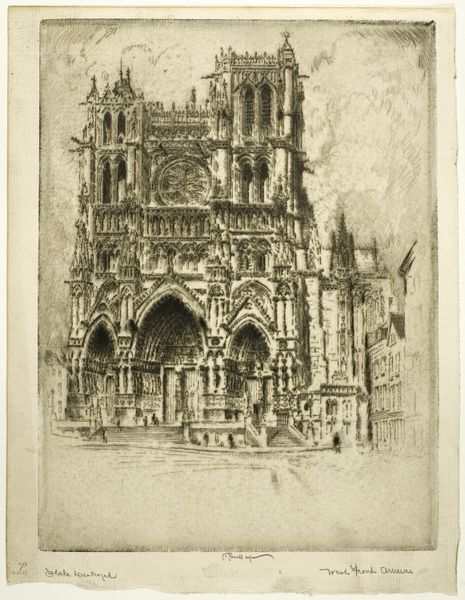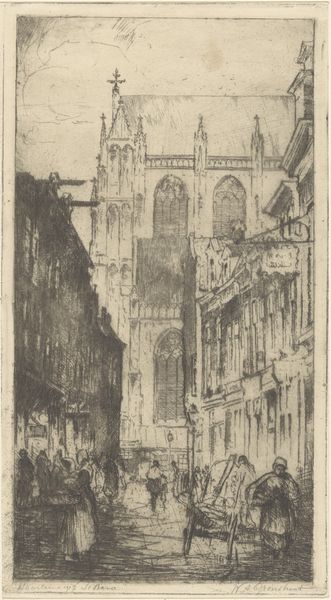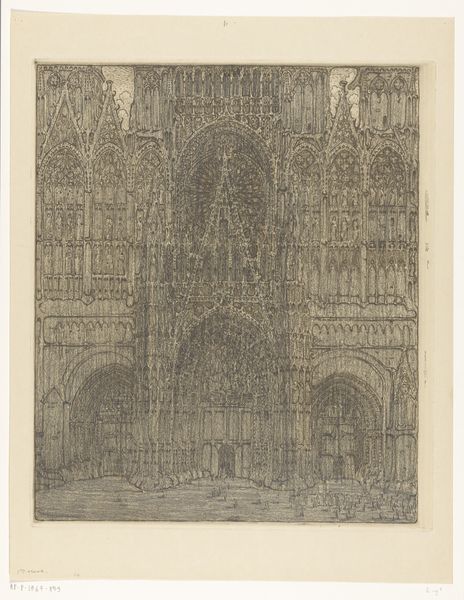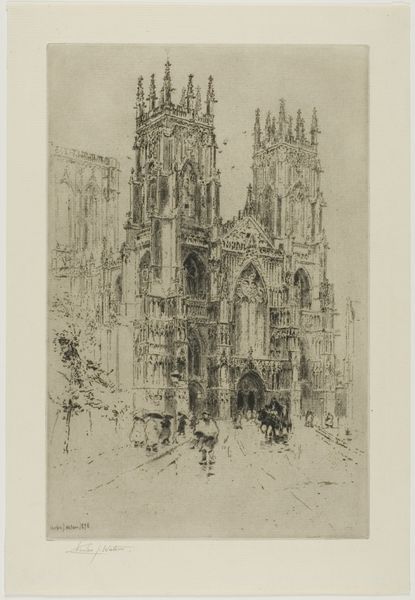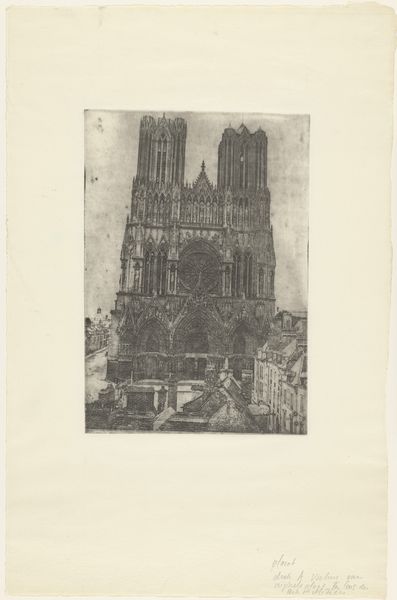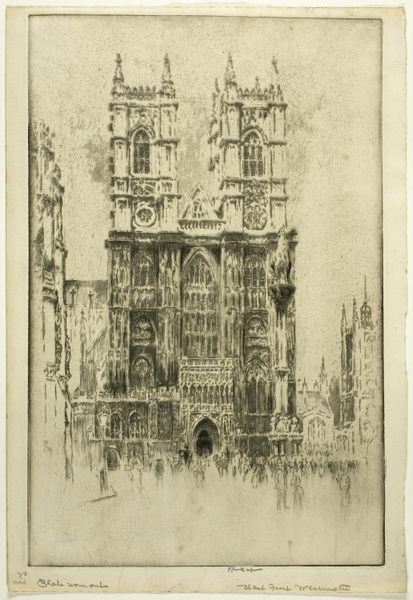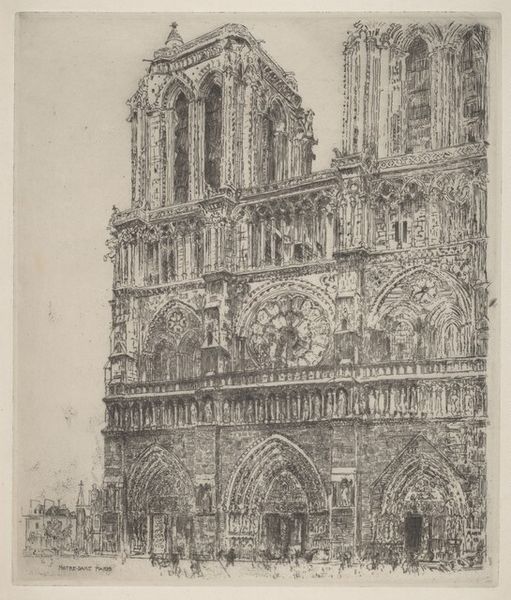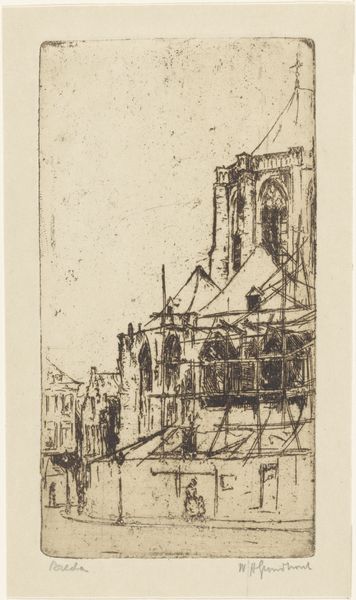
print, etching
# print
#
etching
#
landscape
#
cityscape
Dimensions: height 371 mm, width 238 mm
Copyright: Rijks Museum: Open Domain
Editor: This etching, titled *Kathedraal van Antwerpen*, was created by Jules de Bruycker in 1926. The detail is astonishing. I'm curious about how the cathedral feels both imposing and…vulnerable, somehow. How do you interpret this work? Curator: Vulnerability, that’s a perceptive word for it. Look at the way De Bruycker uses line – it's almost frenetic, particularly around the upper reaches of the tower. To me, the nervous energy is potent here, hinting at a sense of unease in a post-war world. Editor: I hadn't thought of it that way. So the building itself acts almost as a…witness to a specific moment in time? Curator: Precisely! The cathedral isn't just a beautiful building. It is a complex of beliefs, values, a representation of cultural endurance… the almost gothic sharpness suggests this endurance may take a toll. Do you see that repetition anywhere else in the image? Editor: I see similar repetitive sharp angles with the surrounding buildings. The architectural features give off similar feeling to the Cathedral. Curator: What cultural understanding could the artist be drawing upon in repeating these figures of endurance through hard times? Editor: Perhaps he means to convey solidarity among the various buildings within the city through shared symbols. Even when separate and suffering their own circumstances. The endurance that marks the cathedral also reflects the cultural identity of its environment? Curator: Indeed. A silent visual language woven into the fabric of the cityscape. That’s certainly something I’ll think about on my next visit to Antwerp. Editor: I find the discussion about the buildings now influencing how I perceive them as physical embodiment of memory especially striking.
Comments
No comments
Be the first to comment and join the conversation on the ultimate creative platform.

